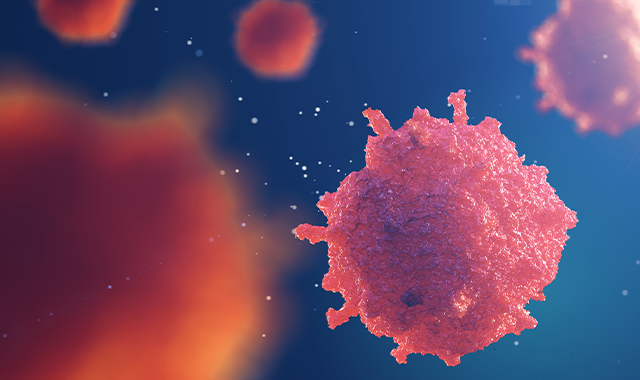Overlap Among KSHV/HHV8-Positive Large B-cell Lymphomas and Associated Diseases
Why research says understanding the overlap between Kaposi sarcoma-associated herpesvirus (KSHV) and human herpesvirus 8 (HHV8)-positive large B-cell lymphomas and associated diseases may lead to better outcomes.

A better understanding of Kaposi sarcoma-associated herpesvirus (KSHV) and human herpesvirus 8 (HHV8)-positive large B-cell lymphomas and associated diseases may lead to better outcomes. A new study published in Modern Pathology examines the significant clinical overlap between KSHV/HHV-8 positive large B-cell lymphomas and researchers report that clinicians need a better understanding of the biology of these lesions and there needs to be a greater refinement of the diagnostic criteria of these lesions.
“We wanted to summarize the current understanding of the spectrum of clinicopathologic features and the diagnostic criteria of a rare group of lymphoproliferative disorders and lymphomas associated with HHV-8,” says study first author Francisco Vega, MD, who is with the Department of Hematopathology at The University of Texas MD Anderson Cancer Center, Houston, Texas. “A significant clinical and pathologic overlap between them has been noticed and reflected in several publications, mainly case reports in the last years. Some cases are difficult to place in a specific diagnostic category and are difficult to classify.”
He says it is important to perform HHV-8 immunostain in all lymphoid proliferations in immunosuppressed patients. Vega notes there is significant clinical overlap between primary effusion lymphoma, HHV-8 multicentric Castleman disease, and KSHV/HHV-8 inflammatory cytokine syndrome. “There are no differences in laboratory parameters or inflammatory cytokines between patients with primary effusion lymphoma and symptomatic KSHV/HHV-8 multicentric Castleman disease patients without primary effusion lymphoma,” says Vega.
He and his colleagues found that patients with primary effusion lymphoma had either concurrent HHV8 multicentric Castleman disease or met criteria for KSHV/HHV8 inflammatory cytokine syndrome. The authors write that CD45/LCA can be a helpful marker to aid in the diagnosis of classic primary effusion lymphomas. “The diagnosis of each HHV-8 positive lymphoid proliferation subtype requires integration of clinical and pathologic findings,” Vega tells Drug Topics.
Related article: Combating Low-Grade Lymphomas with Less Toxic Approaches
He says the immunophenotype of the plasmablasts is helpful, however in some cases it does not fit in the typical profile for each entity. HHV-8 positive lymphoid proliferations, such as classic and extracavitary primary effusion lymphoma, can express T cell markers and strong expression of CD30 that might raise the differential diagnosis with another type of NHL, which is ALK-negative anaplastic large cell lymphoma, says Vega.
Gaurav Goyal, MD, assistant professor in the Division of Hematology-Oncology at The University of Alabama at Birmingham, says HHV-8 related lymphoid neoplasms are poorly understood, and this current manuscript addresses the overlap between HHV-8 and KSV-related lymphomas.
“The authors suggest testing for HHV-8 in all immunocompromised patients with lymphomas. While this may serve as a very important tool in diagnosis and prognosis, further studies are needed to understand if specific therapies can be used in such patients. With increasing understanding of the biology of these disorders, carefully designed clinical trials can be undertaken to improve patient outcomes,” Goyal tells Drug Topics.
Lee Ratner, MD, PhD, professor of Oncology at Washington University School of Medicine and at the Siteman Cancer Center, St. Louis, Missouri, says clinicians do not currently have anti-viral therapies or vaccines that can be used in treatment or prevention of these viruses. However, he says work is ongoing to develop such agents.
The AIDS Malignancy Consortium (AMC) is a National Cancer Institute-supported clinical trials group founded in 1995 and through it a number of new treatments for these lymphomas are currently being studied. “These include novel antibodies and antibodies conjugated to toxins that bind to proteins expressed on the surface of HHV-8 associated lymphomas, together with other chemotherapy regimens. Understanding the molecular basis for these disorders is critical for designing more effective therapies,” Ratner says.